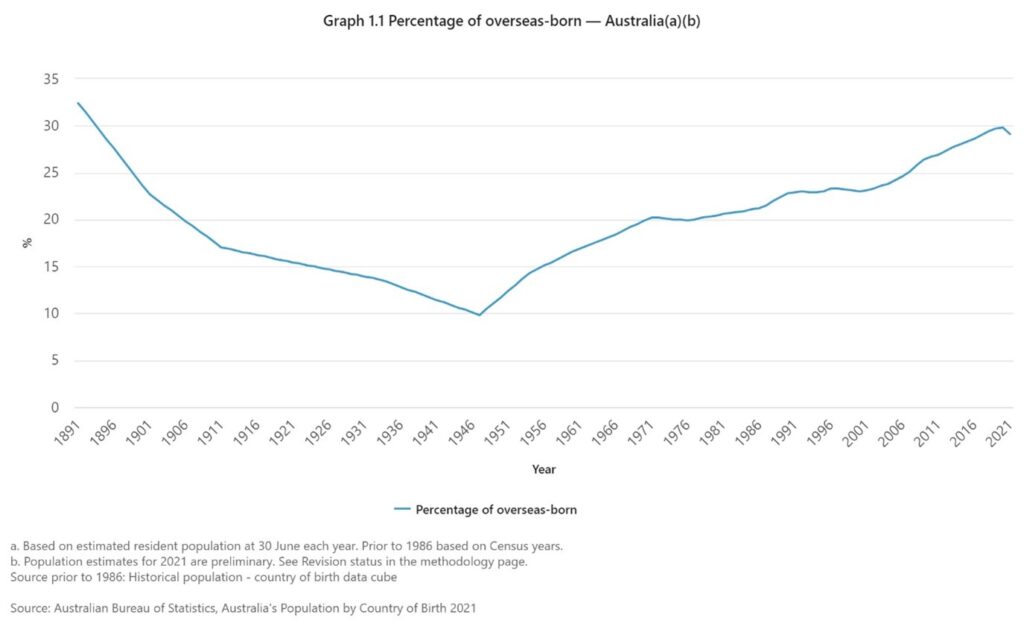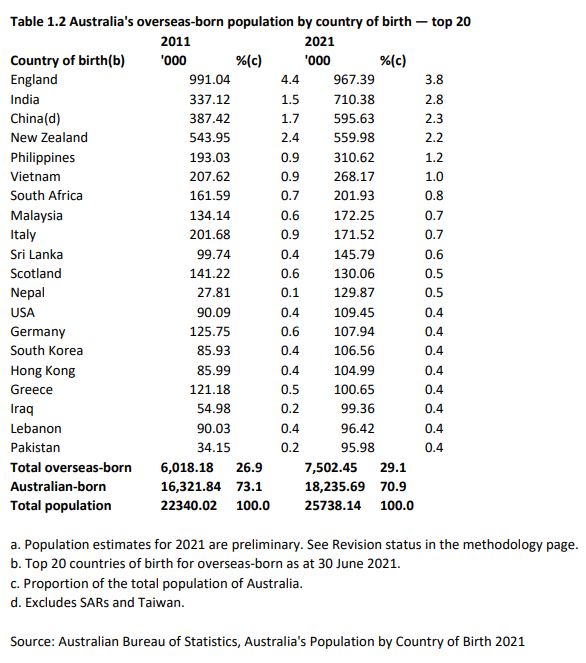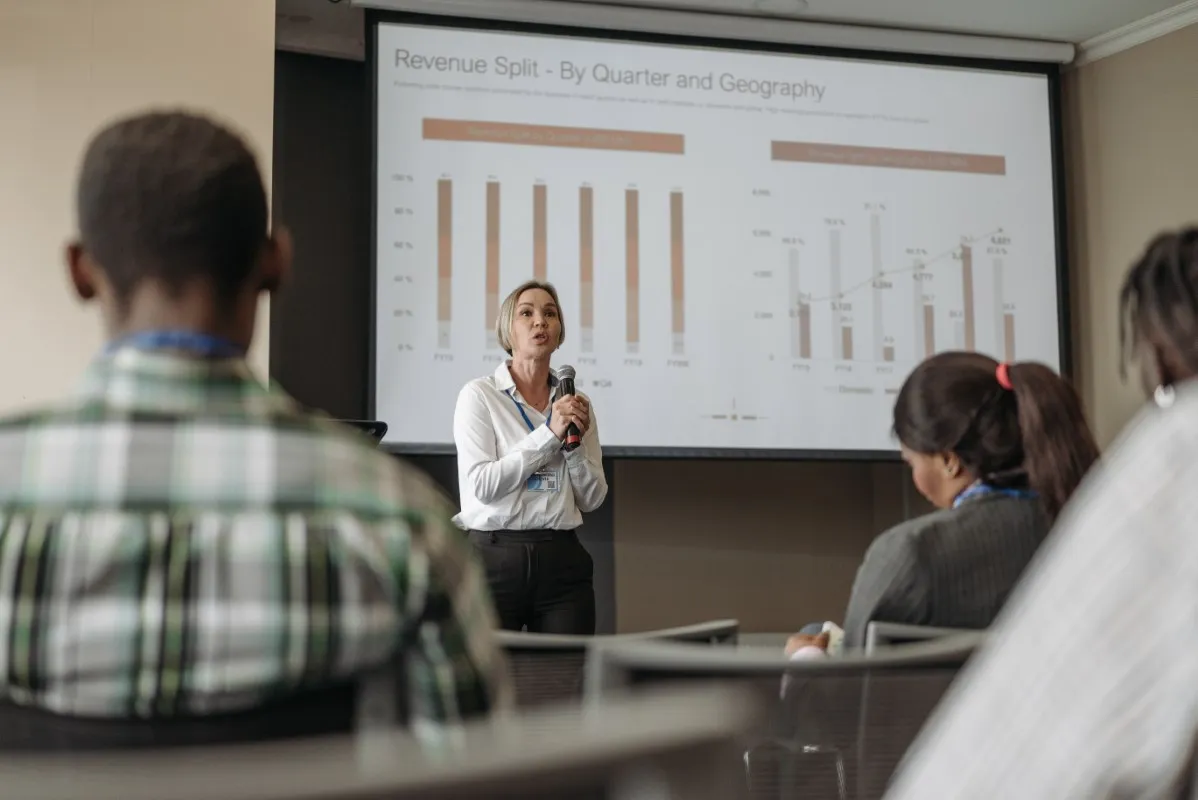Australia’s linguistic diversity is a defining aspect of its society, offering both opportunities and challenges. While precise 2022 data is pending, multilingualism fosters understanding and creates diverse communities. However, it also presents barriers in areas like education and healthcare. Language plays a vital role in preserving cultural identity. Translation services in Australia connect cultures, facilitating communication and helping people thrive in this diverse nation.
What a difficult question: How many languages are spoken in Australia in 2022? While we wait for the Australian Bureau of Statistics to release the 2021 census results, let’s take a look at some of the information that is already available.
In 2021, 29.1% of Australia’s population were born overseas. This is a total of 7.5 million migrants.
For the first time since the year 2000, the proportion of overseas-born Australians has decreased, mainly due to the impact of the COVID-19 pandemic.
The Impact of COVID-19 on CALD Communities in Australia
The impact of COVID-19 on CALD communities in Australia has been significant, with certain communities experiencing a disproportionate impact. Some of the key challenges that CALD communities have faced during the pandemic include:
Disproportionate impact
CALD communities have been disproportionately affected by COVID-19 due to a range of factors, including overcrowding, reliance on public transport, and a higher likelihood of working in industries with a higher risk of exposure, such as aged care and hospitality. This has led to higher rates of COVID-19 infections and deaths in certain communities.
Language barriers and cultural differences
Language barriers and cultural differences have made it difficult for some CALD communities to access healthcare and information about COVID-19. This has led to confusion and misinformation about the virus, which has contributed to the spread of the disease in some communities.
Economic impacts
Many CALD communities have been hit hard by the economic impacts of COVID-19, including job loss and financial insecurity. This has been particularly challenging for temporary visa holders, who have been excluded from government support measures.
Mental health challenges
CALD communities have faced unique mental health challenges during the pandemic, including social isolation, stress, and anxiety. For some communities, the pandemic has also brought up traumatic memories of previous experiences of war or conflict.
To address these challenges, there is a need for targeted support measures that consider the specific needs of CALD communities. This includes measures such as multilingual information resources, culturally appropriate mental health services, and support for businesses owned by CALD communities.
SO HOW EXACTLY HAS THE COVID-19 PANDEMIC AFFECTED CALD COMMUNITIES?
We already know that nearly every country from around the world was represented in Australia’s population in 2021 (wow!). But many CALD groups have declined in number due to the pandemic. For example:
- India – second largest group of overseas-born Australia (England being the first one), has decreased by 13,000 people during the pandemic. However, we can still notice a huge increase if we compare the number of India-born Australians in 2011 (337.12) and in 2021 (710.38).
- Chinese-born Australians (596,000) was the third largest overseas-born group and experienced an annual decrease of 52,000 people. But once again, comparing 2011 (387.42) with 2021 (595.63) we can still see a solid increase. In other words, the China-born Australians now represent 2.3% of the Australian population, compared to 1.7% in 2011.
It’s important to note that the Australia-born population (18.2 million) has actually increased by 196,000 people during the pandemic due to a higher number of births than deaths.
COUNTRIES OF BIRTH WITH THE HIGHEST INCREASE IN AUSTRALIA’S POPULATION SINCE 2011:
- India – with an increase of 373,000 people
- China – with an increase of 208,000 people
- The Philippines – with an increase of 118,000 people
Another interesting fact when it comes to Census data about CALD communities, is that in 2021, the highest proportion of overseas-born Australians were aged 35 to 39 years old (compared to 25-29 years old in 2011).
SO WHAT LANGUAGES ARE SPOKEN IN AUSTRALIA IN 2022?
Whereas we are still waiting for the release of linguistic diversity information according to the ABS Census 2021, we already know the top 20 countries of birth of CALD communities:
So the best we can do for now, in the absence of more accurate information about the languages spoken in Australia in 2022, is to do a breakdown of some of the top languages spoken in the top 20 countries of birth:
- Hindi
- Punjabi
- Mandarin
- Cantonese
- Filipino/Tagalog
- Vietnamese
- Malaysian
- Italian
- Sinhalese
- Tamil
- Nepalese
- German
- Korean
- Greek
- Arabic
- Urdu
My guess is that the most spoken language in Australia in 2022 (after English) is Chinese (Mandarin). What about the most common language spoken in Sydney? We’ll have to wait for that one!
Source: https://www.abs.gov.au/statistics/people/population/australias-population-country-birth/latest-release
Language Diversity in Australia
Language diversity is a significant aspect of Australian society and presents both challenges and opportunities. Some of the key topics related to language diversity in Australia include:
Importance of multilingualism
Multilingualism is essential in a diverse society such as Australia, as it enables individuals to communicate across cultural and linguistic barriers and promotes understanding and respect for different cultures. It also has practical benefits in areas such as business, tourism, and diplomacy.
Challenges and opportunities
Linguistic diversity presents both challenges and opportunities in areas such as education, healthcare, and government services. While language barriers can lead to communication breakdowns and misunderstandings, they can also provide opportunities for innovation and creativity in developing solutions to meet the needs of diverse communities.
Impact of language barriers
Language barriers can also have a significant impact on social integration and participation in Australian society, particularly for newly arrived migrants and refugees. Without access to language learning and support, individuals may struggle to access education, employment, and other key services.
Role of language in shaping cultural identity
Language is an important component of cultural identity and community cohesion and plays a key role in preserving and transmitting cultural heritage. In Australia, many CALD communities maintain their languages and cultural traditions through community organizations, language schools, and cultural events.
Demographics of Australian cities
Australia’s cities are becoming increasingly diverse, with a growing number of residents born overseas and speaking languages other than English at home. In cities such as Sydney and Melbourne, over a quarter of the population speak a language other than English at home, highlighting the importance of language diversity in shaping the social and cultural fabric of these cities.
Overall, language diversity is a vital aspect of Australian society, and it is important to recognize the value and contributions of multilingual communities. It is also essential to address the challenges and barriers that arise from linguistic diversity and ensure that all members of the community have access to the resources and support they need to thrive.
Related Posts

Get a quote today
"*" indicates required fields
Subscribe today to receive the latest insights and updates from Sylaba Translations









